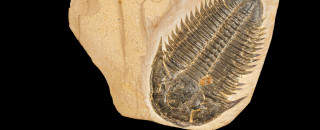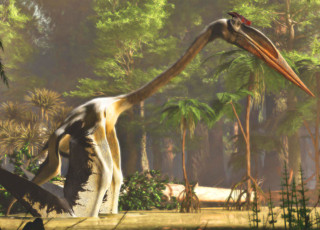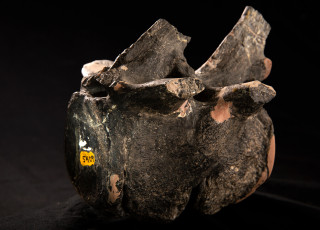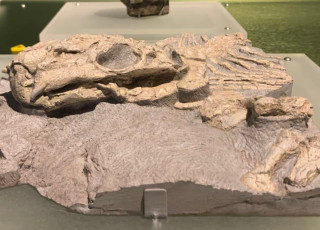Fantastic Fossils Reveal Utah's Cambrian World
The trilobite Utaspis marjumensis is one of the creatures found in western Utah's Cambrian rocks. Image ©NHMU
By Riley Black
In the dry and rocky expanses of Utah’s western desert, there rests the remains of an ancient seabed. The rocks here were formed from ocean sediments more than 505 million years ago, a time when animal life was proliferating into strange and new forms in the oceans. Thanks to a new collection from the Bureau of Land Management now reposited with the Natural History Museum of Utah, these prehistoric oddities are now coming into view.
The new specimens date back to a time called the Cambrian Period. In our state, these rocks are most famous of the innumerable trilobites found within these strata. But what many don’t know is that Utah has fossil specimens to rival other famous Cambrian hotspots like British Columbia’s Burgess Shale. Utah’s Wheeler, Weeks, and Marjum formations not only contain trilobites, but many unusual animals with segmented bodies, jointed appendages, compound eyes, shutter-shaped mouths, and more. “When I saw this collection of many soft-bodied creatures, many previously unknown to science, I got pretty excited,” says NHMU paleontology collections manager Carrie Levitt-Bussian.
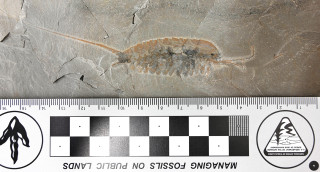
Naturally, fossils need to be properly cataloged and curated for scientists to begin to unravel their stories. This is Levitt-Bussian’s specialty. “What was really neat about these fossils is that almost immediately after unpacking them and curating them properly, researchers wanted access to these fossils in order to publish and name them,” she says. Experts were excited about this collection right out the box, a look at what Utah’s Cambrian world was like and how it compares to organisms found elsewhere around the world. But first the fossils had to be curated.
Curating such important fossils is no simple task. “Some of these paper-thin fossils are new species,” Levitt-Bussian says. They’re not only delicate, but of extreme importance. Even handling these fossils can be a little bit of a stressful experience. “We need to be aware of our surroundings to ensure that the specimen doesn’t bump into anything,” Levitt-Bussian says, with extra care taken in numbering the fossils with special archival paint and ink so that the fossil doesn’t crack. From there, she adds, each fossil is cut into a snug, foam-layered try to keep the fossil from moving. “Once the whole handling, numbering, housing, and storing part of the process is complete, it’s a great feeling to know we did our best to house them properly in perpetuity,” she says.
These are the early, necessary steps before the fossils can be properly studied. That’s part of science and a museum’s mission, to care for important fossils like these in perpetuity so that generations of scientists can study them. Research on the fossils has only just begun, with two papers already out about these fossils. Now that the Cambrian creatures are snug in their beds, their secrets can start to be revealed.
Riley Black is the author of Skeleton Keys, My Beloved Brontosaurus, Prehistoric Predators, and a science writer for the Natural History Museum of Utah, a part of the University of Utah in Salt Lake City. Our mission is to illuminate the natural world and the place of humans within it. In addition to housing outstanding exhibits for the public, NHMU is a research museum. Learn more.
